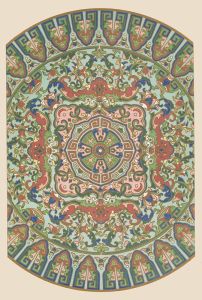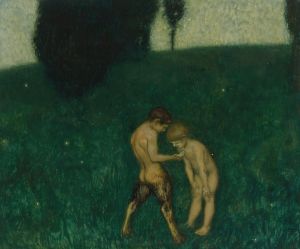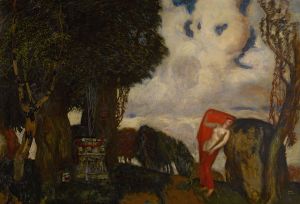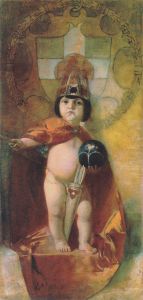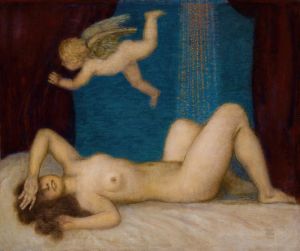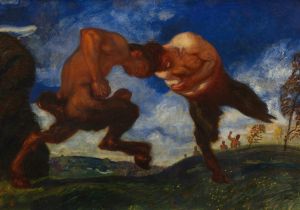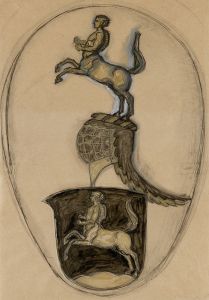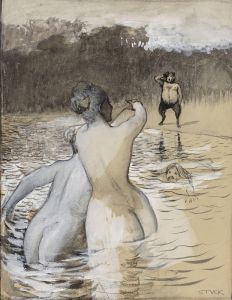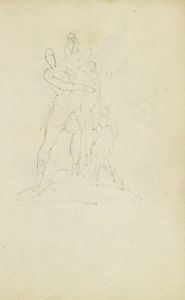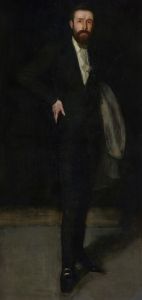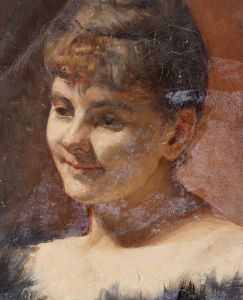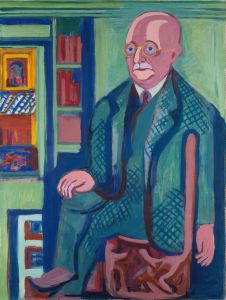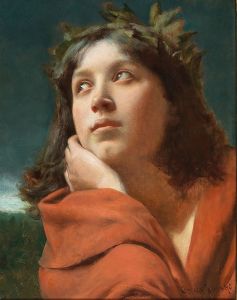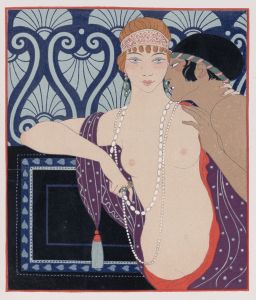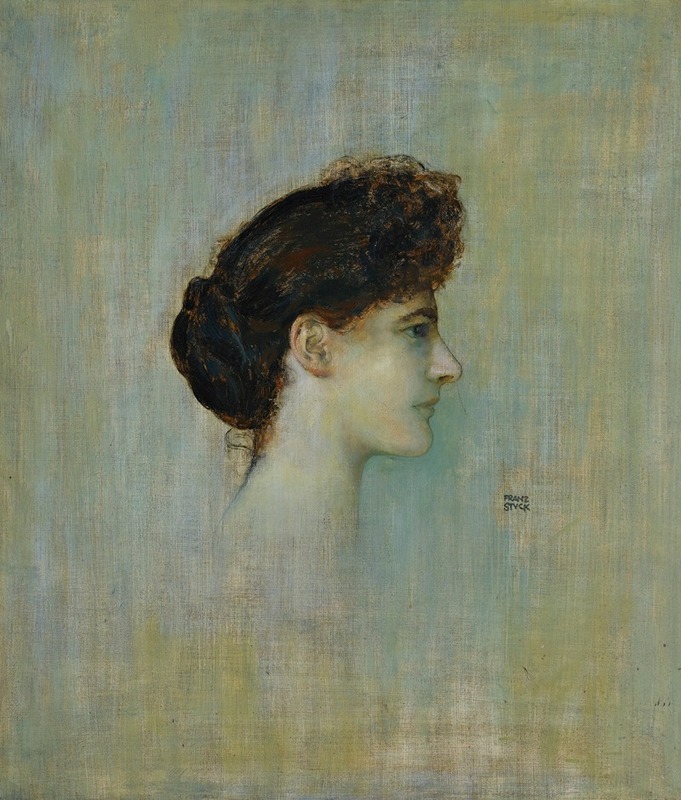
Damenbildnis
A hand-painted replica of Franz von Stuck’s masterpiece Damenbildnis, meticulously crafted by professional artists to capture the true essence of the original. Each piece is created with museum-quality canvas and rare mineral pigments, carefully painted by experienced artists with delicate brushstrokes and rich, layered colors to perfectly recreate the texture of the original artwork. Unlike machine-printed reproductions, this hand-painted version brings the painting to life, infused with the artist’s emotions and skill in every stroke. Whether for personal collection or home decoration, it instantly elevates the artistic atmosphere of any space.
Franz von Stuck was a prominent German painter, sculptor, and architect, associated with the Symbolist movement. He was born on February 23, 1863, in Tettenweis, Bavaria, and became one of the founding members of the Munich Secession, an art movement that sought to break away from the traditional academic art styles of the time. Stuck is well-known for his mythological and allegorical subjects, often imbued with a sense of mystery and eroticism.
"Damenbildnis" is one of Franz von Stuck's notable works, although specific details about this painting are not as widely documented as some of his other pieces. The title "Damenbildnis" translates to "Portrait of a Lady" in English, suggesting that the painting is a depiction of a female subject. Stuck's portraits often reflect his interest in capturing the psychological depth and enigmatic qualities of his subjects, which is a hallmark of his Symbolist approach.
Stuck's style is characterized by a strong use of chiaroscuro, the contrast between light and dark, which he employed to create dramatic and atmospheric effects. His works often feature a rich palette and meticulous attention to detail, which can be seen in the rendering of textures and the expressive qualities of his figures. In "Damenbildnis," it is likely that these stylistic elements are present, contributing to the overall mood and impact of the painting.
Throughout his career, Franz von Stuck was influenced by a variety of artistic movements and figures. He drew inspiration from classical mythology, the Renaissance, and the works of artists such as Arnold Böcklin and Hans Makart. Stuck's fascination with mythological themes is evident in many of his works, where he often explored the interplay between the human and the divine, the sensual and the spiritual.
Stuck's contribution to the art world extends beyond his paintings. He was also a respected teacher at the Academy of Fine Arts in Munich, where he influenced a generation of artists, including notable figures such as Paul Klee and Wassily Kandinsky. His impact on the development of modern art, particularly in Germany, is significant, as he helped pave the way for new artistic expressions and movements.
While specific information about "Damenbildnis" may be limited, it can be appreciated within the broader context of Stuck's oeuvre and his contributions to the Symbolist movement. His ability to convey complex emotions and ideas through his art continues to be celebrated, and his works remain an important part of art history.
Franz von Stuck passed away on August 30, 1928, in Munich, leaving behind a legacy of influential art that continues to be studied and admired. His works, including "Damenbildnis," are housed in various collections and museums, where they continue to captivate audiences with their evocative and timeless qualities.





